ناموجود
Oncogenetics BRCA Panel Real-TM,sacace-48 t
Sacace™ Oncogenetics BRCA Panel NEW VERSION 18/08/2022 IVD For in Vitro Diagnostic Use Oncogenetics BRCA Panel Handbook Real Time PCR kit for detection of 8 mutations: BRCA1 (185delAG, 4153delA, 5382insC, 3819delGTAAA, 3875delGTCT, T181G (Cys61Gly), 2080delA) and BRCA2 (6174delT) REF R-27/P-48FRT 48 samples Sacace™ Oncogenetics BRCA Panel NEW VERSION 18/08/2022 NAME Oncogenetics BRCA Panel INTRODUCTION Both BRCA genes are tumor suppressor genes that produce proteins that are used by the cell in an enzymatic pathway that makes very precise, perfectly matched repairs to DNA molecules. Harmful mutations in any of these genes disable the gene or the protein that it produces. Specific inherited mutations in BRCA1 and BRCA2 increase the risk of female breast and ovarian cancers, and they have been associated with increased risks of several additional types of cancer. Together, BRCA1 and BRCA2 mutations account for about 20 to 25 percent of hereditary breast cancers (1) and about 5 to 10 percent of all breast cancers (2). In addition, mutations in BRCA1 and BRCA2 account for around 15 percent of ovarian cancers overall (3). Breast and ovarian cancers associated with BRCA1 and BRCA2 mutations tend to develop at younger ages than their nonhereditary counterparts. Breast cancer: About 12 percent of women in the general population will develop breast cancer sometime during their lives (4). By contrast, according to the most recent estimates, 55 to 65 percent of women who inherit a harmful BRCA1 mutation and around 45 percent of women who inherit a harmful BRCA2 mutation will develop breast cancer by age 70 years (5, 6). Ovarian cancer: About 1.3 percent of women in the general population will develop ovarian cancer sometime during their lives (4). By contrast, according to the most recent estimates, 39 percent of women who inherit a harmful BRCA1 mutation (5, 6) and 11 to 17 percent of women who inherit a harmful BRCA2 mutation will develop ovarian cancer by age 70 years (5, 6). Mutations in BRCA1 and BRCA2 increase the risk of several cancers in addition to breast and ovarian cancer. BRCA1 mutations may increase a woman’s risk of developing fallopian tube cancer and peritoneal cancer (7, 8). Men with BRCA2 mutations, and to a lesser extent BRCA1 mutations, are also at increased risk of breast cancer (9). Men with harmful BRCA1 or BRCA2 mutations have a higher risk of prostate cancer (10). Men and women with BRCA1 or BRCA2 mutations may be at increased risk of pancreatic cancer (11). Relative indications for testing for a mutation in BRCA1 or BRCA2 for newly diagnosed or family members include a family history among 1st (FDR), 2nd (SDR), or 3rd(TDR) degree relatives usually on the same side of the family but not limited:[12] – A known mutation (BRCA1 or BRCA2) in a cancer susceptibility gene within the family – Women affected with any Breast cancer diagnosed under the age of 30[14]Women affected with triple negative breast cancer (TNBC) (estrogen receptor negative, progesterone receptor negative, and HER2/neu negative) under the age of 50 – Two relatives (FDR/SDR) diagnosed under the age of 45 – Three relatives (FDR/SDR) diagnosed with average age of 50 or less – Four relatives at any ages – Ovarian cancer with either an additional diagnosed relative or a relative with male breast cancer – A single family member with both breast and ovarian cancer – Male breast cancer – Pancreatic cancer with breast or ovarian cancer in the same individual or on the same side of the family. Sacace™ Oncogenetics BRCA Panel NEW VERSION 18/08/2022 Fig.1 BRCA mutations frequency in Caucasian population samples tested. INTENDED USE Oncogenetics BRCA Panel Kit is intended for detection and allelic discrimination of 8 mutations of BRCA genes: BRCA1 (185delAG, 4153delA, 5382insC, 3819delGTAAA, 3875delGTCT, T181G (Cys61Gly), 2080delA) e BRCA2 (6174delT). These mutations increase the risk of breast and ovarian cancers, and they have been associated with increased risks of several additional types of cancer. The kit is intended to be used to assess BRCA1 and BRCA2 gene status in ovarian cancer and breast cancer patients. The results of this test should not be used as the sole basis for diagnosis, treatment or patient management decisions. PRINCIPLE OF ASSAY Oncogenetics BRCA Panel Kit is a qualitative tests that allow the detection by Real Time PCR based on the amplification of the genome specific region using specific primers. In Real Time PCR the amplified product is detected using fluorescent dyes. These dyes are linked to oligonucleotide probes that bind specifically to the amplified product. The real-time monitoring of the fluorescence intensities during the reaction allows the detection of accumulating product without re-opening of the reaction tubes after the PCR run. Mutation BRCA Mutations frequency in breast cancer samples tested (Caucasian population) 5382insC 67,80% 4153delA 12,10% 185delAG 1,90% 3875del4 1,60% 3819delGTAAA 3,5% 2080delA 3,40% Cys61Gly 6,40% 6174delT 3,3% Mutation BRCA Mutations frequency in ovarian cancer samples tested (Caucasian population) 5382insC 54,60% 4153delA 12,20% 185delAG 3,80% 3819delGTAAA 1,20% 2080delA 11,60% Cys61Gly 12,10% 6174delT 4,50% Sacace™ Oncogenetics BRCA Panel NEW VERSION 18/08/2022 MATERIALS PROVIDED Ready to use 12×8 strip format 12 x 8 strips (x 4) ready to use tubes (total 48 strips, each PCR tube contains 15 µl of mix) Taq polymerase, 0,5 ml (5 vials) Negative control C-, 1 mL (1 vial) C+ Homozygous Wild Type (allele 1-1), 50 μL (8 vials, 1 for each PCR mix) C+ Heterozygous (allele 1-2), 50 μL (8 vials, 1 for each PCR mix) C+ Homozygous Mutant (allele 2-2), 50 μL (8 vials, 1 for each PCR mix) Contains reagents for 48 tests (1 strip contains reagents for 1 clinical sample) MATERIALS REQUIRED BUT NOT PROVIDED Zone 1: sample preparation DNA extraction kit Biological cabinet Desktop microcentrifuge for “eppendorf” type tubes Dry heat block Vortex mixer Pipettes and sterile pipette tips with filters 1,5 ml polypropylene sterile tubes Biohazard waste container Refrigerator, Freezer Zone 2: Real Time amplification Real Time Thermal cycler Workstation Pipettes (adjustable) Sterile pipette tips with filters Freezer, refrigerator A – BRCA1 185delAG (ref. 137) B – BRCA1 4153delA (ref. 168) C – BRCA1 5382insC (ref. 138) D – BRCA1 3819delGTAAA (ref.385) E – BRCA1 3875delGTCT (ref. 386) F – BRCA1 T181G (Cys61Gly) (ref.146) G – BRCA1 2080delA (ref. 387) H – BRCA2 6174delT (ref. 139) Sacace™ Oncogenetics BRCA Panel NEW VERSION 18/08/2022 WARNINGS AND PRECAUTIONS In Vitro Diagnostic Medical Device The user should always pay attention to the following: 1. Use sterile pipette tips with aerosol barriers and use new tip for every procedure. 2. Store extracted positive material (samples, controls and amplicons) away from all other reagents and add it to the reaction mix in a separate area. 3. Use disposable gloves, laboratory coats and eye protection when handling specimens and reagents. Thoroughly wash hands afterwards. 4. Do not use a kit after its expiration date. 5. Do not mix reagents from different kits. 6. Dispose all specimens and unused reagents in accordance with local regulations. 7. Specimens and controls should be prepared in a laminar flow hood. 8. Avoid repeated thawing and freezing of the reagents, this may reduce the sensitivity of the test. 9. Once the reagents have been thawed, vortex and centrifuge briefly the tubes. 10. Specimens may be infectious. Use Universal Precautions when performing the assay. 11. Clean and disinfect all spills of specimens or reagents using a disinfectant such as 0,5% sodium hypochlorite, or other suitable disinfectant. Follow by wiping down the surface with 70% ethanol. 12. Avoid contact of specimens and reagents with the skin, eyes and mucous membranes. If these solutions come into contact, rinse immediately with water and seek medical advice immediately. 13. Material Safety Data Sheets (MSDS) are available on request. 14. Use only recommended nucleic acid isolation kits for sample preparation. 15. Use of this product should be limited to personnel trained in the techniques of PCR. 16. Workflow in the laboratory must proceed in a uni-directional manner, beginning in the Extraction Area and moving to the Amplification Area. Do not return samples, equipment and reagents in the area where you performed previous step. Personnel should be using proper anti-contamination safeguards when moving between areas. STABILITY Oncogenetics BRCA Panel kit is stable up to the expiration date indicated on the kit label. The product will maintain performance through the control date printed on the label. Exposure to light, heat or humidity may affect the shelf life of some of the kit components and should be avoided. Repeated thawing and freezing of these reagents should be avoided, as this may IVD For in Vitro Diagnostic Use Only Sacace™ Oncogenetics BRCA Panel NEW VERSION 18/08/2022 reduce the sensitivity. Components stored under conditions other than those stated on the labels may not perform properly and may adversely affect the assay results. QUALITY CONTROL In accordance with Sacace’s ISO 13485-Certified Quality Management System, each lot is tested against predetermined specifications to ensure consistent product quality. STORAGE INSTRUCTIONS Oncogenetics BRCA Panel kit must be stored at 2-8°C. The kits can be shipped at 2-8°C and stored as indicated immediately on receipt. SAMPLE COLLECTION, STORAGE AND TRANSPORT Oncogenetics BRCA Panel Kit can analyze genomic DNA extracted from: whole blood collected in EDTA tubes; Buccal swab: insert the swab into the nuclease-free 1,5 ml tube and add 0,2 ml of Transport medium. Vigorously agitate swabs in medium for 15-20 sec. Specimens can be stored at +2-8°C for no longer than 48 hours, or freeze at -20°C to -80°C. Transportation of clinical specimens must comply with country, federal, state and local regulations for the transport of etiologic agents. DNA ISOLATION Sacace Biotechnologies recommends to use the following kits: Genomic column DNA Express – spin column extraction kit (Sacace, REF K-1-1/E) ; SaMag Blood DNA Extraction kit – for use with SaMag 12/24 (Sacace, REF SM001); QIAamp DNA Blood mini kit (Qiagen, 51104). DNA samples with concentration in range from 10 to 20 ng/μl could be analyzed. PROTOCOL Oncogenetics BRCA Panel kit doesn’t include reagents required for sample preparation and DNA extraction. Blood samples and biological material must undergo stages of samples preparation and DNA extraction by the recommended kits or those similar by quality and quantity of the extracted DNA. Use of blood samples collected in tubes containing heparin is not recommended. The analysis of the genomic DNA specimens using Oncogenetics BRCA Panel kit includes the following stages: 1. Preparing the Real Time PCR; 2. Real Time PCR analysis; 3. Data analysis with the software of Real Time PCR instrument; 4. Results analysis and conclusions. Sacace™ Oncogenetics BRCA Panel NEW VERSION 18/08/2022 Experimental protocol The quantity of DNA to be analyzed must not be less than 10 ng per μl. The violation of this requirement may affect the validity of analysis and void the manufacturer guarantee. Total reaction volume: 25 μl EXPERIMENTAL PROTOCOL Total reaction volume: 25 μl 1. Prepare the necessary number of ready-to-use strips (1 eight tube strip for each clinical sample) and mark them. 2. Spin for 3-5 sec the Taq polymerase, mix by pipetting and add 5 µl to each PCR tube. 3. Add into the corresponding PCR tubes 5.0 μl of extracted DNA from clinical sample. 4. Add into the corresponding PCR tubes 5.0 μl of controls according to the related amplification mix (for example, C+ controls for BRCA-1185delAG must be added in the A line tubes, C+ controls for BRCA-4153delA must be added in the B line tubes and so on, see below picture): – C+ Homozygous Wild Type (allele 1-1) – C+ Heterozygous (allele 1-2) – C+ Homozygous Mutant (allele 2-2) * it’s suggested to use at least 1 Positive control (for example C+ Heterozygous) for each run. 5. Spin the tubes for 3–5 seconds to collect the drops. 6. Insert the tubes in the Real-time PCR instrument. NOTE: use 1 eight tube strip for each clinical sample. Add 5 µl of Taq polymerase and then 5 µl of extracted DNA to each tube of the strip (e.g. sample 1 DNA in tubes A1,B1,C1,D1,E1,F1,G1,H1 sample 2 DNA in tubes A2,B2,C2,D2,E2,F2,G2,H2) A – BRCA1 185delAG B – BRCA1 4153delA C – BRCA1 5382insC D – BRCA1 3819delGTAAA E – BRCA1 3875delGTCT F – BRCA1 T181G (Cys61Gly) G – BRCA1 2080delA H – BRCA2 6174delT Sacace™ Oncogenetics BRCA Panel NEW VERSION 18/08/2022 Amplification Create a temperature profile on your instrument as follows: Step Plate or modular type instruments1 Rotor type instruments2 Temperature, °С Time Cycles Temperature, °С Time Cycles Hold 80 2 min 1 80 2 min 1 Hold 94 3 min 1 95 3 min 1 Cycling 94 15 s 5 95 10 s 40 64 40 s 60 40 s fluorescence detection Cycling 2 94 15 s 35 64 40 s fluorescence detection 1 For example, SaCycler-96™ (Sacace); CFX-96 / iQ5™ (BioRad); Mx3005P™ (Agilent);. 2 If the test is performed on Rotor Gene (Qiagen) instrument the tube caps may be marked and it’s recommended to cut the strip into two equal parts (4 tubes), but it is necessary to strictly observe the order of the tubes in the rotor. Table 2. Detection channels Gene Mutation Allele & Channel BRCA1 185 delAG rs80357783 Joe/HEX/Yellow: AG Fam/Green: del AG BRCA1 4153 delA rs80357711 Joe/HEX/Yellow: A Fam/Green: del A BRCA1 5382 insC rs80357906 Joe/HEX/Yellow: delC Fam/Green: insC BRCA1 3819 del GTAAA p.Val1234Glnfs rs80357609 Joe/HEX/Yellow: GTAAA Fam/Green: del GTAAA BRCA1 3875 delGTCT rs80357868 Joe/HEX/Yellow: GTCT Fam/Green: del GTCT BRCA1 Cys61Gly T181G rs28897672 Joe/HEX/Yellow: Cys(T) Fam/Green: Gly(G) BRCA1 2080 delA rs80357522 Joe/HEX/Yellow: A Fam/Green: del A BRCA2 -6174 del T rs80359550 Joe/HEX/Yellow: T Fam/Green: del T Sacace™ Oncogenetics BRCA Panel NEW VERSION 18/08/2022 DATA ANALYSIS The fluorescent signal intensity is detected in 2 channels as shown in the table below: FAM HEX/Joe Allele 2 (mutant) Allele 1 (wild type) Interpretation of results for CFX-96/iQ5 (Bio-rad): Principle of interpretation: – Signal only in allele 1 (channel HEX) : homozygous wild type – Signal only in allele 2 (channel FAM) : homozygous mutated – Signal in both allele 1 and allele 2 (channels HEX and FAM) : heterozygous Set Baseline Cycles at 5-15 for all samples and Crossing Threshold value as 100 for both channels. Choose “Allelic Discrimination” Analysis mode. NOTE FOR CFX-96/iQ5 (Bio-rad): if a Ct value is higher than 32 the sample is considered invalid and must be repeated. If there is no Ct value in both channels the sample is invalid and must be repeated starting from the extraction. Sacace™ Oncogenetics BRCA Panel NEW VERSION 18/08/2022 Interpretation of results for SaCycler-96 (Sacace Biotechnologies): Principle of interpretation: – Signal only in allele 1 (channel HEX) : homozygous wild type – Signal only in allele 2 (channel FAM) : homozygous mutated – Signal in both allele 1 and allele 2 (channels HEX and FAM) : heterozygous NOTE: when creating new test for Oncogenetics Panel SNP, select “Analysis of polimorphisms (two probes)”, name “a” on FAM channel and name “b” on HEX channel. Set Heterozygote dCp < 3,0 and Homozygote dCp > 6 (see pictures below). To analyse results, be sure to select “Analysis of polimorphisms (two probes)” as Analysis type and “Curve Shape (Cp)” as Method. The results will be displayed in the table on the right (see below pictures as reference). Sacace™ Oncogenetics BRCA Panel NEW VERSION 18/08/2022 Example of results: a = FAM (mutant, allele2) b = HEX (wild type, allele1) = sample heterozygous (both alleles present) = sample homozygous wild type (only allele 1 present) = sample homozygous mutant (only allele 2 present) NOTE FOR SaCycler-96 (Sacace Biotechnologies): if a Ct value is higher than 32 the sample is considered invalid and must be repeated. If there is no Ct value in both channels the sample is invalid and must be repeated starting from the extraction. Sacace™ Oncogenetics BRCA Panel NEW VERSION 18/08/2022 Interpretation of results for Rotorgene 6000/Q (Corbett Research, Qiagen): Principle of interpretation: – Signal only in allele 1 (Yellow) : homozygous wild type – Signal only in allele 2 (Green) : homozygous mutated – Signal in both allele 1 and allele 2 : heterozygous Click Analysis, click Other, select Allelic Discrimination, select Slope Correct, click Eliminate cycles before / Ignore first and insert value. Insert the Threshold and Outlier removal values as in the following table: Gene Mutation Allele & Channels Threshold Slope correct Outlier Removal Ignore first BRCA1 185 delAG rs80357713 Yellow: AG 0,03 on 15% 5 Green: del AG BRCA1 4153 delA rs80357711 Yellow: A 0,03 on 15% 5 Green: del A BRCA1 5382 insC rs80357906 Yellow: delC 0,03 on 20% 5 Green: insC BRCA1 3819 del GTAAA p.Val1234Glnfs rs80357609 Yellow: GTAAA 0,03 on 15% 5 Green: del GTAAA BRCA1 3875 delGTCT rs80357868 Yellow: GTCT 0,03 on 15% 5 Green: del GTCT BRCA1 Cys61Gly T181G rs28897672 Yellow: Cys(T) 0,03 on 15% 5 Green: Gly(G) BRCA1 2080 delA rs80357522 Yellow: A 0,03 on 15% 5 Green: del A BRCA2 -6174 del T rs80359550 Yellow: T 0,03 on 15% 5 Green: del T NOTE for Rotorgene 6000/Q (Corbett Research, Qiagen): if a Ct value is higher than 37 the sample is considered invalid and must be repeated. If there is no Ct value in both channels the sample is invalid and must be repeated starting from the extraction. Sacace™ Oncogenetics BRCA Panel NEW VERSION 18/08/2022 REFERENCES 1. Easton DF. How many more breast cancer predisposition genes are there? Breast Cancer Research 1999; 1(1):14–17. 2. Campeau PM, Foulkes WD, Tischkowitz MD. Hereditary breast cancer: New genetic developments, new therapeutic avenues. Human Genetics 2008; 124(1):31–42. 3. Pal T, Permuth-Wey J, Betts JA, et al. BRCA1 and BRCA2 mutations account for a large proportion of ovarian carcinoma cases. Cancer 2005; 104(12):2807–16. 4. Howlader N, Noone AM, Krapcho M, et al. (eds). SEER Cancer Statistics Review, 1975-2011, National Cancer Institute. Bethesda, MD 5. Antoniou A, Pharoah PD, Narod S, et al. Average risks of breast and ovarian cancer associated with BRCA1 or BRCA2 mutations detected in case series unselected for family history: A combined analysis of 22 studies. American Journal of Human Genetics 2003; 72(5):1117–1130. 6. Chen S, Parmigiani G. Meta-analysis of BRCA1 and BRCA2 penetrance. Journal of Clinical Oncology 2007; 25(11):1329–1333. 7. Brose MS, Rebbeck TR, Calzone KA, et al. Cancer risk estimates for BRCA1 mutation carriers identified in a risk evaluation program. Journal of the National Cancer Institute 2002; 94(18):1365–1372. 8. Finch A, Beiner M, Lubinski J, et al. Salpingo-oophorectomy and the risk of ovarian, fallopian tube, and peritoneal cancers in women with a BRCA1 or BRCA2 mutation. JAMA 2006; 296(2):185–192. 9. Tai YC, Domchek S, Parmigiani G, Chen S. Breast cancer risk among male BRCA1 and BRCA2 mutation carriers. Journal of the National Cancer Institute 2007; 99(23):1811–1814. 10. Levy-Lahad E, Friedman E. Cancer risks among BRCA1 and BRCA2 mutation carriers. British Journal of Cancer 2007; 96(1):11–15. 11. Ferrone CR, Levine DA, Tang LH, et al. BRCA germline mutations in Jewish patients with pancreatic adenocarcinoma. Journal of Clinical Oncology 2009; 27(3):433–438. 12. Greenberg RA (September 2006). “BRCA mutations and childhood cancer”. Cancer Biol. Ther. 5 (9): 1103–4. doi:10.4161/cbt.5.9.3370. Sacace™ Oncogenetics BRCA Panel NEW VERSION 18/08/2022 KEY TO SYMBOLS USED Sacace Biotechnologies Srl via Scalabrini, 44 – 22100 – Como – Italy Tel +390314892927 Fax +390314492493 mail: info@sacace.com web: www.sacace.com List Number Caution! Lot Number Contains sufficient for tests Expiration Date Version Store at K+ Pos Control Manufacturer C– Negative control of Extraction Consult instructions for use IC Internal Control
حمل و نقل کالا
درخواست محصول
.فقط مشتریانی که این محصول را خریداری کرده اند و وارد سیستم شده اند میتوانند برای این محصول دیدگاه(نظر) ارسال کنند.
محصولات پیشنهادی
Cinna Clone-SmarTaq DNA Polymerase,2500u -5 u/µl-DP1613
امتیاز 0 از 5
SinaPure ONE(Simultaneous DNA and RNA extraction) 50React-EX6051
امتیاز 0 از 5
Sinapure-DNA (Cell culture, Tissues, Gram negative Bacteria and CSF)50t – PR881613-EX6011
امتیاز 0 از 5





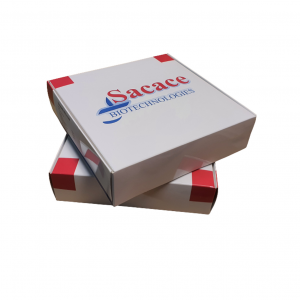

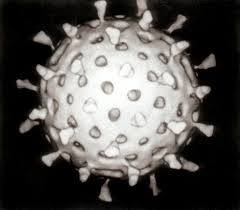

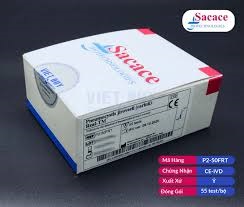

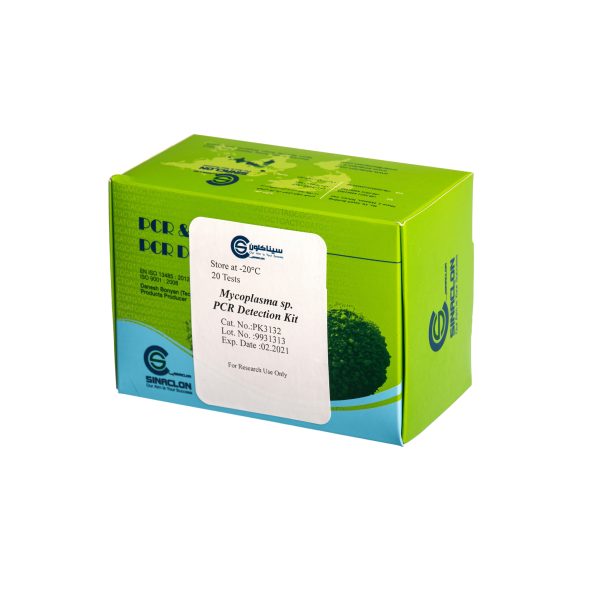
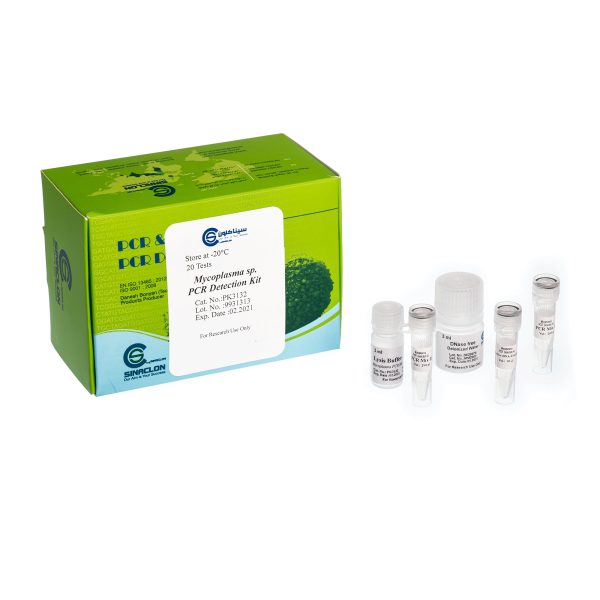
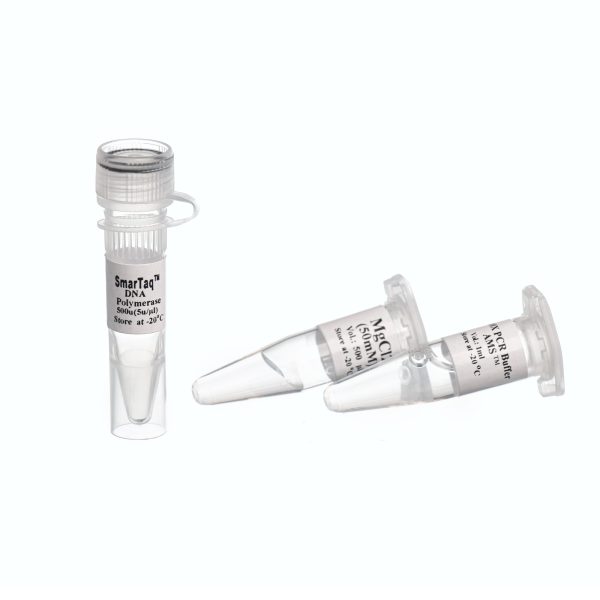


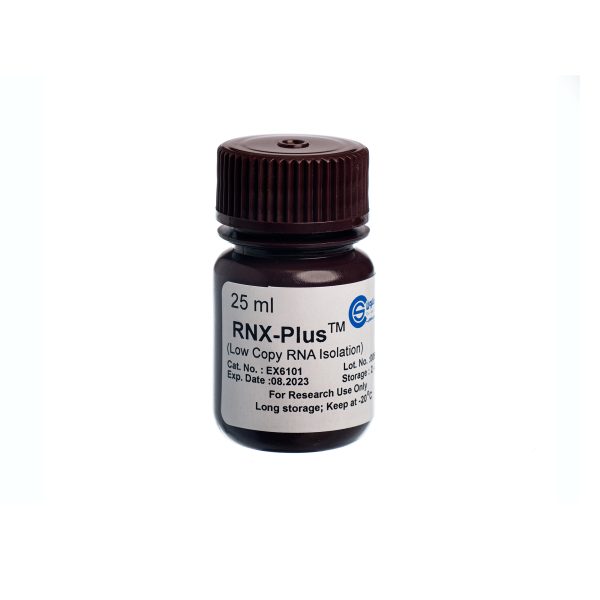
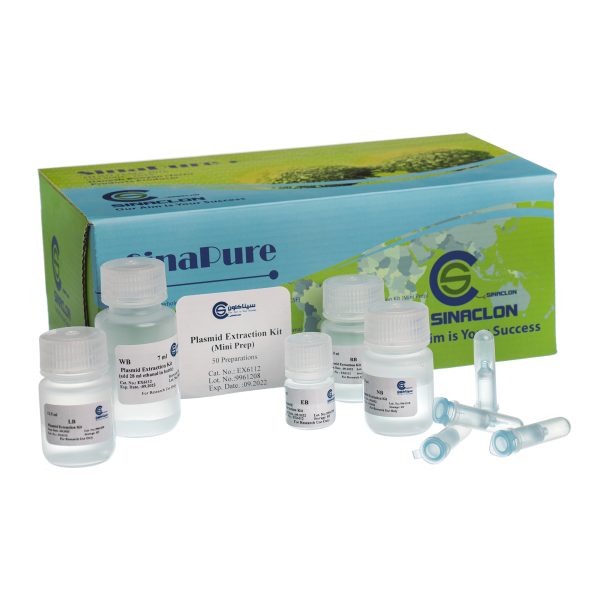
نقد و بررسیها
هنوز بررسیای ثبت نشده است.